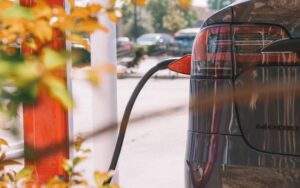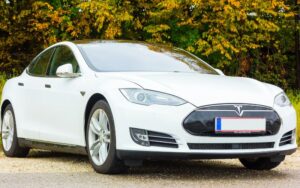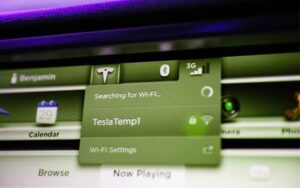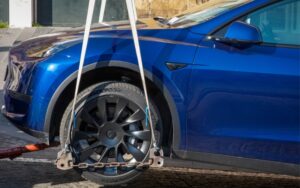Are Teslas Bad in Cold Weather? (Things You Should Know)
Last updated on September 12th, 2023 at 04:03 am
A Tesla is a beautiful car to own. It has many excellent features that make your journey more enjoyable. It is another part of modern technology that is worth having.
However, many wonder if Tesla is also prone to the same problems as other electric vehicles. How does cold weather affect the car? Are Teslas bad in cold weather?
Teslas are not bad in cold weather. The car has many innovative features that help to minimize the effect of cold weather. Using these features helps to improve your Tesla’s user experience in cold weather.
This article will give specific details on the effect of cold weather on Tesla in cold weather. It also gives tips on how you can improve the vehicle’s performance.
Read on to understand more about the innovative EV.
Does Cold Weather Affect Teslas?
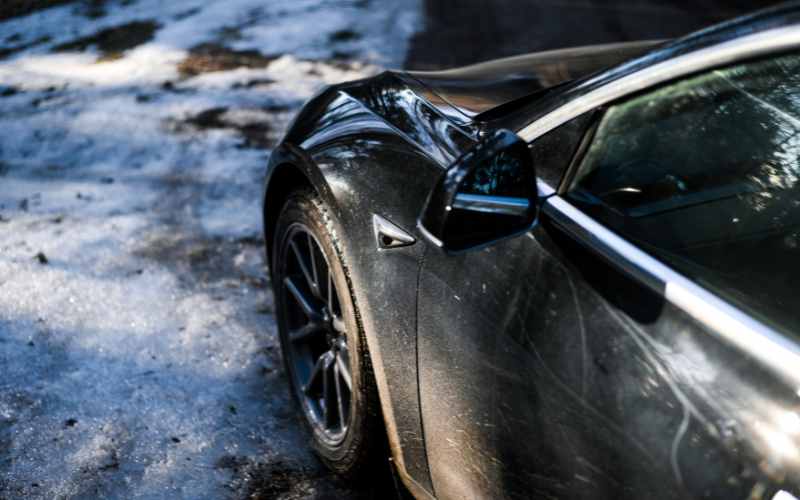
The cold weather affects your Teslas. Generally, cold weather conditions affect all types of vehicles. However, the effect differs in various electric vehicle (EV) types.
Battery functions through the movement of ions in the liquid cell. Cold conditions make these liquids thicker, making it difficult for ions to move freely and carry charge effectively.
The resultant resistance leads to the following:
#1. Reduced Driving Range
The higher resistance in the battery results in a reduced driving range for each full charge.
This reduction means you should expect to reach a different distance than before on a single charge.
The reduced driving range is the most notable result of the rising resistance in the vehicle’s battery. So usable energy goes into the movement of the ions.
The energy that should go towards powering your vehicle. It is important to note that the changes in driving range are neither constant nor predictable.
Environmental factors along the trip may vary and, as such, affect the temperature of your vehicle component.
#2. Charging Port Freezing Shut
Driving safely to a charging unit is a source of relief. However, sometimes you might discover another issue with your Tesla due to the effect of the cold weather.
The charging port of the car is sensitive to weather changes and fluctuations. You might find that the charging port has frozen shut due to temperature.
If this happens, charging becomes difficult.
#3. Regenerative Braking and Acceleration
One of the innovative ways of recuperating energy is using regenerative energy. However, it is difficult to use this feature in cold conditions.
Resistance in the battery makes restoring energy using the vehicle automatically shut down the feature.
Hence, whenever a Tesla driver applies brakes in cold weather, he uses more energy than necessary.
#4. Increased Charging Time
The average charging time for a Tesla increases in cold conditions. The vehicle battery functions at a lower efficiency rate and takes longer to reach full charge.
This increase in the charging period may seem like a hassle for car owners. However, keeping the battery in optimal condition is a safety mechanism.
When charging at any Tesla Supercharger station, the power per second is often high. However, this creates an issue when charging in cold weather.
Charging creates heat, and that increases the temperature of your battery. Fast charging can create a lot of heat and rapid changes in the battery temperature.
To prevent these sudden changes, the vehicle system reduces the charging rate to ensure a systemic and gradual increase in charging time. That’s why it takes longer to charge.
How Do Teslas Perform In Cold Weather?
You get between 60% to 80% of the standard battery range when using your Tesla in cold conditions. The exact figure depends mainly on several factors.
Like every other primary electric vehicle, the major concern when considering Tesla’s performance relates to its battery and driving range. How far can you go with each charge?
Using the average miles covered after each charge, you can estimate the actual performance of your battery in cold conditions.
Apart from the car’s battery’s electrochemical processes, some other factors determine the car’s performance.
These factors include the following:
#1. Driving Style and Condition
The car owner’s driving style and road conditions affect the performance in cold weather.
Driving routines such as sudden acceleration, idling, and slow movement through traffic affects the final range of performance.
Understanding how your driving routine affects your Tesla performance will take a while. You can begin to adjust the driving style to conserve more energy.
A typical example is using the “Chill Mode” while driving. This mode activates a steady acceleration mode that conserves energy.
#2. Preconditioning
It can also affect the battery performance. Using the preconditioning feature before driving helps prepare the car for cold conditions.
The features include defrosting the windows, wipers, and side mirrors. You can also use external seat warmers to keep the interior warm without draining the battery.
We are preparing the car before a trip ensures that the charge goes majorly into driving. The energy lost to other features reduces, translating to better efficiency.
#3. How Cold is Too Cold for a Tesla?
Temperature averaging below -30 °F is considered too cold for any model of Tesla.
Understand that the car can still function properly at this temperature. However, prolonged exposure is risky.
The battery can begin to freeze if the car remains at this temperature for an extended period. However, regular charging and preconditioning help to remove the issue.
A Tesla owner should be careful and refrain from driving the car in colder weather. With all its impressive features, Tesla is not a car for snowtime.
How Long Can Your Tesla Sit In Cold Weather?
Tesla vehicles’ running period in cold weather depends on the movement conditions. These conditions affect the sitting periods.
It is essential to note the differences and consider the effect while on your journey. There are two main types of “sitting.”
They are as follows:
#1. Idling
Tesla can keep functioning for more than 12 hours while sitting idle in cold weather.
The system can keep the vehicle and inner components warm for up to 15 hours when you start your journey with a full battery.
That is enough time to get out of everyday traffic, and you should have no problem driving your car in cold weather. Also, that is longer than fuel-powered vehicles.
In cases where you experience a complete battery drain, a simple charge is enough to get back on the road.
Due to the Tesla system and mechanism, there is no problem starting the car after a charge.
The battery’s increase in temperature during the charging process is enough to start the vehicle.
#2. Slow Movement In Traffic
Moving slowly through traffic drains the battery significantly more than simply idling. The period reduces significantly.
At most, depending on the movement, slow movement in traffic is different from idling. With idling, there is little or no movement; hence the system can conserve energy.
However, the case is different from the slow movement. The battery can only function for a few hours before needing a charging unit.
Do You Need to Warm Up Your Tesla In Cold Weather?
It is necessary to warm up your Tesla in cold weather before each driving trip. This step will improve your driving experience during the cold seasons.
Besides the user experience, warming up your Tesla ensures the car is in optimal traveling conditions. Warming up your car counteracts the effects of cold weather.
Some of the issues persist as you drive through the water or cold conditions. However, this step gives you the best start for your journey.
However, the trick is to warm up the vehicle without losing much power. You will need maximum power at the start of your journey to keep you going.
Here are tips and features on how to warm up your Tesla.
#1. Plug In Before Trip
You can plug in your vehicle when a charging source is available, especially at home or near a charging outlet.
Keeping the vehicle plugged in helps to minimize power loss due to battery functions. Your battery uses certain power features even when you are not driving.
These features include warming up the battery for vehicle start-up. Plug-in keeps the battery working while maintaining maximum power.
#2. Scheduled Departure Setting
Another smart option to warm up your Tesla is to enable the “Scheduled Departure” feature. It is another excellent tip to warm up your Tesla without losing power.
This feature allows you to input the time of departure or the time to start your trip. Using the information, the vehicle system automatically sets the right time to start charging.
It also enables the “Precondition” feature. The battery uses heat from the charging to warm up the engine and prepare for the trip.
Where charging is impossible, you can activate the feature manually in these steps:
- Open your updated Tesla app.
- Check under Climate, and select “Turn On.”
Here is a table summarizing the performance level of Tesla in Cold weather.
| S/N | Tesla Driving Conditions | Average Performance Level or Period |
|---|---|---|
| 1 | Normal driving in cold weather | 60-80% |
| 2 | Idling | 12-18 Hours |
| 3 | Slow Movement | 3-4 Hours |

Hey, I’m Michael Davis, a 35-year-old with a degree and a love for cars and tech. Since I was a kid, cars have been my thing—so much that I even thought they ran on magic beans! Fast forward, and I’ve built Vehicle Army, your one-stop-shop for easy-to-understand car facts.

